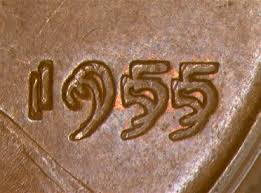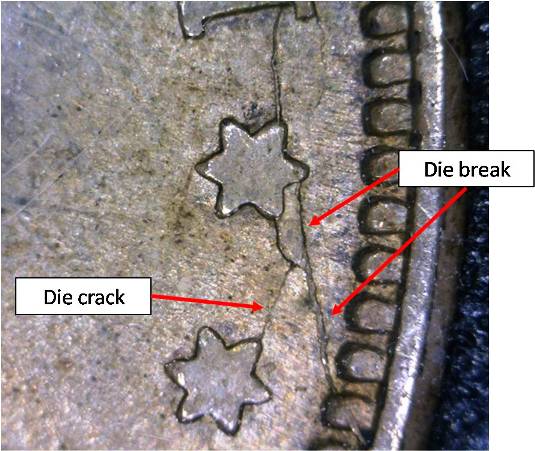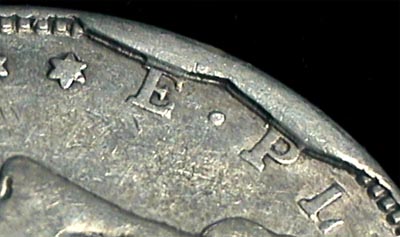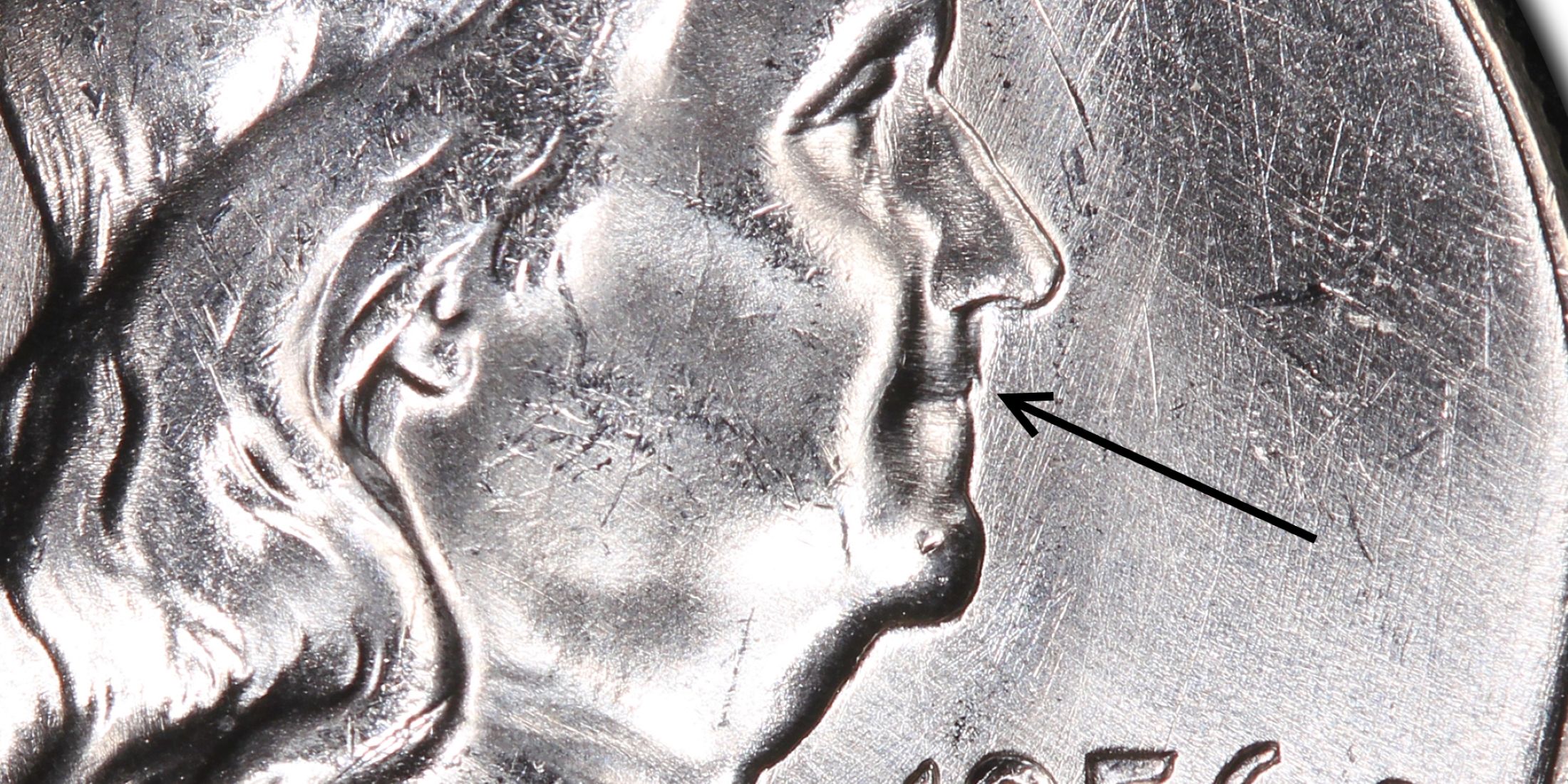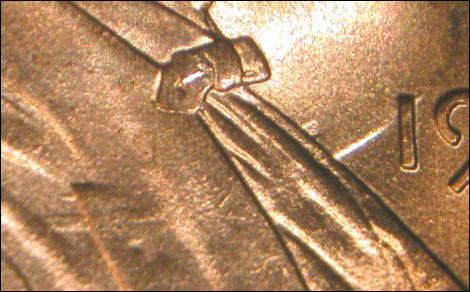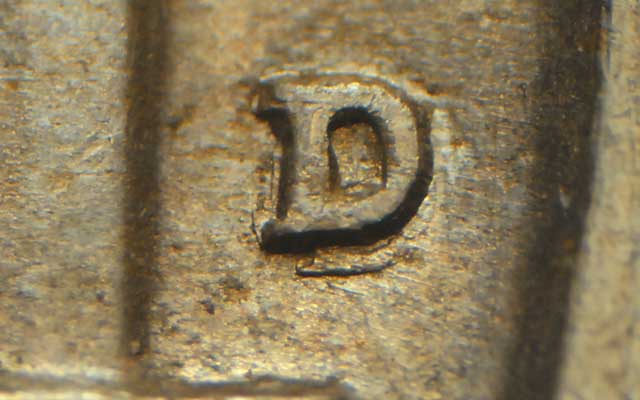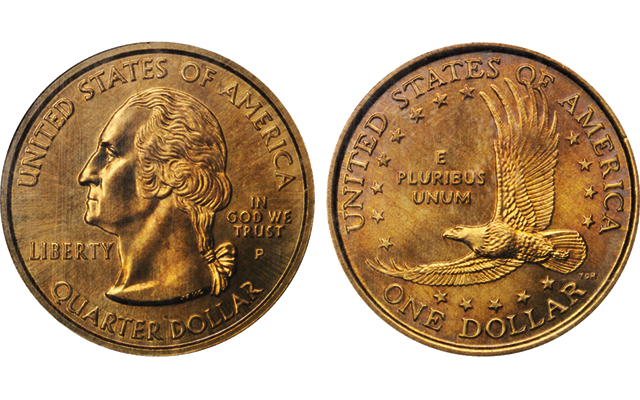Guess what, more definitions.
To get the image of a coin onto a coin is, unfortunately, not magic. A plaster sculpture that is about 8-12 inches in diameter is designed. This shrunk down to size and put onto the Master Hub (hubs always have a positive or relief/raised image of the coin). This Master Hub is then used to create Master Dies (bearing the negative, or incuse/sunken image of the coin). The few Master Dies are then copied to create Working Hubs (hubs), which are used to create the Working Dies (dies) on steel rods that actually make the coins.
As you might guess, the errors can occur on the hubs and dies from their creation, at installation, and during use. Most of these errors are still released from the mint due to the fact that the problems cannot be seen by the naked eye on quick inspection.
A few exceptions exist, where the dies are used despite producing obvious flaws. The 1955 Lincoln cent is an example. The die error was discovered half way thru the run of coins and the decision was made to just continue at this point in the run. This is an example of Double Die.
Die Damage
Die Damage is the most common of these kinds of die errors. These include die cracks, die breaks, and die chips. Since the dies are smashing into the planchet, they wear down. This cause a multitude of errors. The below-marked picture is a great way to see two die errors on the same coin. Notice how the break is “deeper & darker” than the crack
Die Crack- like is sounds, is a crack in the die, which results in a raised line of metal in the stuck coin.
Die Break- This can be a piece that breaks completely off or if the whole die breaks, leaving a larger error.
Die Chip– a kind of die break (not near the rim) the die and leaves a void where the coin metal flows during minting.
Clashed Dies or Die clash
Although like die damage, this results when the dies strike each other w/o a planchet in the press. One die will thus leave a mark on the other. The most commonly used example of this is the Franklin half-dollar with “Bugs Bunny” teeth. The eagles wings reverse indented on Franklin’s face, giving him protruding teeth. If you are thinking this ia hard to see, yes, it is. Most of the errors we talk about require a loop to see, as collectors are getting into the nitty-gritty at this point.
Misaligned dies
The way that an obverse and reverse die are aligned is important. It is actually a set way, go figure, so that elements that are in high or low relief have the proper amount of metal to fill in on both sides. You do not want to have a front and a back element that are both low relief so that the coin would have a “thin” spot. So If the dies are not synced up, errors occur. This can be from the dies being rotated, offset or tilted. A MAD (MisAligned Die) clash can be had. (see the circle of metal going true the date in the picture below).
Punching errors
Back in the days of yore the mint was all about saving money (hehe) so they would sometimes send out dies w/o dates or mint marks on them, so they could be reused (reduse, recycle)! This meant that a technician would have to take a small steel rod with a number or letter on it, called a punch, and strike the die to add a needed element. Well, whenever you add in the human element, srrros can and do occur. If they did not strike hard enought, they had to redo it. If they put it in the wrong place, or were off on the orientation, that was a boo- boo. If they used the wrong punch, opps again, punching errors.
Overdates and over mintmarks
In another effort to save money (yep still funny) mints would use a die until it broke (see shattered coin above). So when a new year came about, time to change the date on the coin, or give the die to a different mint and throw a new mintmark on there. These changes are not considered errors in the true sense, as it was intentional. These modifications to the dies are considered “varieties”, but I am including them as some non-numismatists believe them to be errors.
Mule
When two different dies were never not suppose to go together are. Like a quater and dollar, from this Coin World picture.
So that is a general summary of the kinds of errors in coins, broken into three main topics, Planchet, Striking, and Hub/Die errors! Stay tuned for more fun posts on coins!

